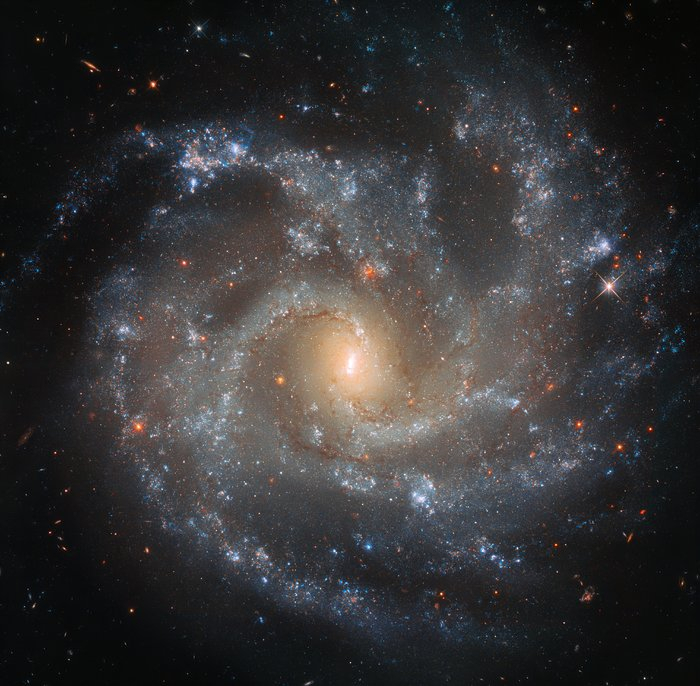The operators of the Hubble Space Telescope recently shared a beautiful image of a distant spiral galaxy. What sets it apart from the other cosmic structures spotted by the space telescope is the number of times it hosted supernova explosions caused by dying stars.
Hubble, which is being co-managed by NASA and the European Space Agency (ESA), is currently Earth's main space telescope. Since its launch in 1990, it has been constantly providing stunning images from space. Through the images captured by Hubble, astronomers are able to learn more about the various comic objects and structures in the universe.

Exploring NGC 5468
In the recent photo shared by Hubble, a stunning galaxy known as NGC 5468 can be seen. According to NASA and the ESA, NGC 5468 is an immediate spiral galaxy, which means it falls in between spiral galaxies that have a central bar and those that don't.
NGC 5468 lies within the constellation Virgo and is about 140 million light-years from Earth's neighbourhood. Unlike the other galaxies spotted by Hubble, NGC 5468 is oriented towards Earth. Due to its Earth-facing position, astronomers are able to easily study and observe the various objects and events within the galaxy.
The Supernova Events Of NGC 5468
Some of the most spectacular events spotted within NGC 5468 are supernova explosions. According to the ESA, over the past two decades, at least five supernova explosions were spotted within the galaxy. Due to it's position, astronomers on Earth were able to observe the supernova events.
"In the last 20 years the galaxy NGC 5468, visible in this image, has hosted a number of observed supernovae of both the aforementioned types: SN 1999cp, SN 2002cr, SN2002ed, SN2005P, and SN2018dfg," ESA explained in a statement. "Despite being just over 130 million light-years away, the orientation of the galaxy with respect to us makes it easier to spot these new 'stars' as they appear."
How Supernova Explosions Happen
As explained by the ESA, different supernova types were detected within NGC 5468. Before exploding, some of the stars ran out of fuel and collapsed under the weight of their own gravity. On the other hand, some stars within the galaxy caused nuclear fusions after becoming too massive for their structures to support.
"Such explosions, known as supernovae, mainly occur in a couple of ways: either a massive star depletes its fuel at the end of its life, become dynamically unstable and unable to support its bulk, collapses inwards, and then violently explodes; or a white dwarf in an orbiting stellar couple siphons more mass off its companion than it is able to support, igniting runaway nuclear fusion in its core and beginning the supernova process," ESA explained in a statement.









